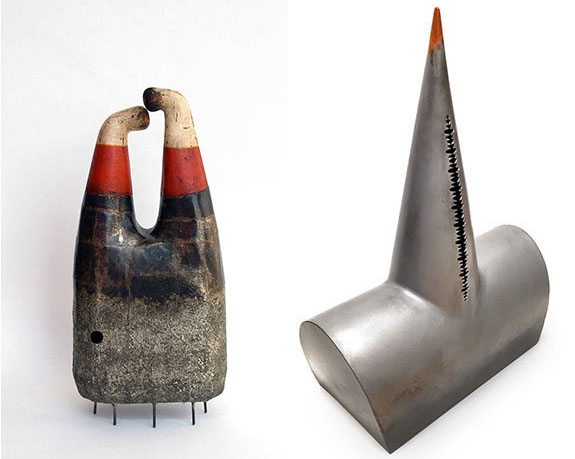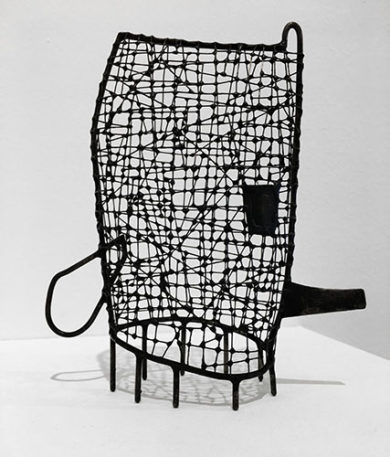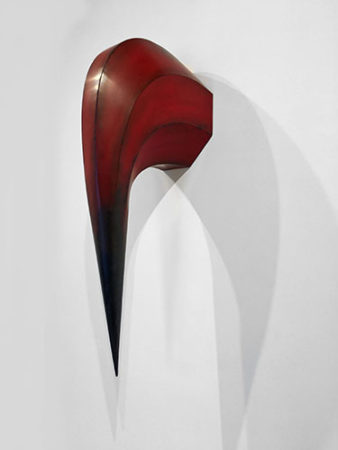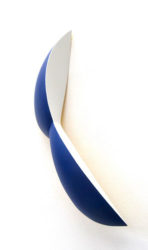
by David M. Roth
Constructs 2.0, the second pairing in this space of sculptors Marc D’Estout and Jay Kelly, features a broad range of psychologically freighted works. Their origins trace to the tribal/totemic forms that undergird so much modernist sculpture. Disentangling these influences from the artists’ own considerable innovations isn’t always easy – famous names continuously spring to mind — yet there are plenty of instances in this spirited and sometimes spooky exhibition where the artists assert their own peculiar identity in hybrids that are at once recognizable and strange.
The initial surprise has to do with scale. Photos of these primarily metal works suggest forms that are substantially larger, and that gap — between the possible and the actual — tugs hard at the imagination, particularly in Kelly’s works, which you can easily envision at monumental scale. If there’s a thread connecting the two artists, it’s a shared a surrealist sensibility, visible in the way both bend archetypical forms to their own ends.

# # #

Powerful as these works are, I found myself more attracted to (and entranced by) the artist’s forays into purely nonobjective shapes. Three such works are arrayed side-by-side on a wall 
# # #
Marc D’Estout & Jay Kelly: “constructs 2.0” @ Jack Fischer Gallery through December 30, 2017.
About the author:
David M. Roth is the editor and publisher of Squarecylinder.